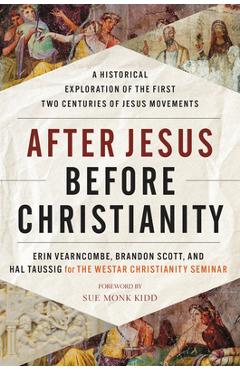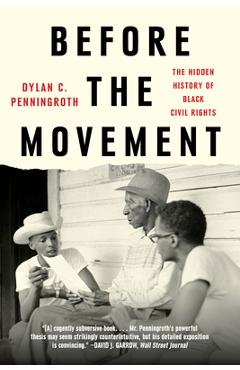Before the Movement: The Hidden History of Black Civil Rights - Dylan C. Penningroth

Detalii Before the Movement: The Hidden
libris.ro
195.3 Lei
217 Lei
History
Dylan C. Penningroth
Before the Movement: The Hidden - Disponibil la libris.ro
Pe YEO găsești Before the Movement: The Hidden de la Dylan C. Penningroth, în categoria History.
Indiferent de nevoile tale, Before the Movement: The Hidden History of Black Civil Rights - Dylan C. Penningroth din categoria History îți poate aduce un echilibru perfect între calitate și preț, cu avantaje practice și moderne.
Preț: 195.3 Lei
Caracteristicile produsului Before the Movement: The Hidden
- Brand: Dylan C. Penningroth
- Categoria: History
- Magazin: libris.ro
- Ultima actualizare: 28-10-2025 01:22:05
Comandă Before the Movement: The Hidden Online, Simplu și Rapid
Prin intermediul platformei YEO, poți comanda Before the Movement: The Hidden de la libris.ro rapid și în siguranță. Bucură-te de o experiență de cumpărături online optimizată și descoperă cele mai bune oferte actualizate constant.
Descriere magazin:
The familiar story of civil rights goes something like this: Once, the American legal system was dominated by racist officials who shut Black people out and refused to recognize their basic human dignity. Then, starting in the 1940s, a few brave lawyers ventured south, bent on changing the law--and soon, everyday African Americans joined with them to launch the Civil Rights Movement. In Before the Movement , historian Dylan C. Penningroth overturns this story, demonstrating that Black people had long exercised the rights of everyday use, and that this lesser-known private-law tradition paved the way for the modern vision of civil rights. Well-versed in the law, Black people had used it to their advantage for nearly a century to shape how they worked, worshiped, learned, and loved. Based on long-forgotten sources found in the basements of county courthouses, Before the Movement recovers a vision of Black life allied with, yet distinct from, the freedom struggle.

Produse asemănătoare

After Jesus Before Christianity: A Historical Exploration of the First Two Centuries of Jesus Movements - Erin Vearncombe
![]() libris.ro
libris.ro
Actualizat in 28/10/2025
198.84 Lei

Before the Movement: The Hidden History of Black Civil Rights - Dylan C. Penningroth
![]() libris.ro
libris.ro
Actualizat in 28/10/2025
195.3 Lei

Making the Revolution Global. Black Radicalism and the British Socialist Movement before Decolonisation, Hardback/Theo Williams
![]() elefant.ro
elefant.ro
Actualizat in 28/10/2025
144.99 Lei

After Jesus Before Christianity: A Historical Exploration of the First Two Centuries of Jesus Movements, Hardcover/Erin Vearncombe
![]() elefant.ro
elefant.ro
Actualizat in 28/10/2025
216.99 Lei

Before the Movement: The Hidden History of Black Civil Rights - Dylan C. Penningroth
![]() libris.ro
libris.ro
Actualizat in 28/10/2025
139.45 Lei
Produse marca Dylan C. Penningroth

Before the Movement: The Hidden History of Black Civil Rights - Dylan C. Penningroth
![]() libris.ro
libris.ro
Actualizat in 28/10/2025
195.3 Lei

Before the Movement: The Hidden History of Black Civil Rights - Dylan C. Penningroth
![]() libris.ro
libris.ro
Actualizat in 28/10/2025
139.45 Lei